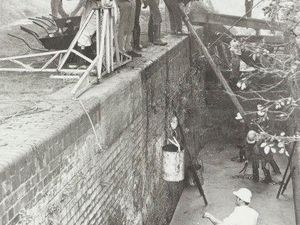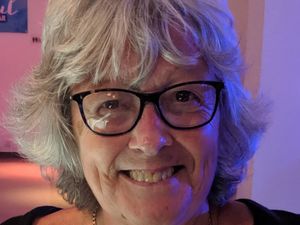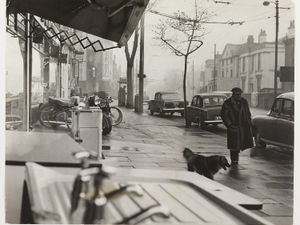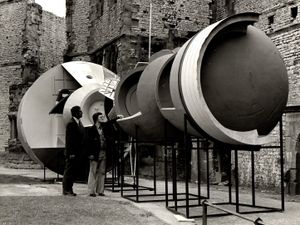Flashback to 1981: They’re off! Starting gun fired on inaugural London Marathon
It was a wet and windy day but that didn’t deter the thousands who turned out to compete in the first ever London marathon.
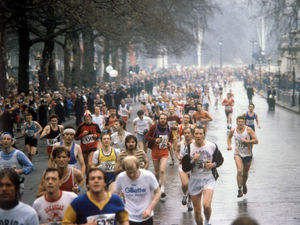
Olympic steeplechase medallists Chris Brasher and John Disley has been inspired to start the event thanks to the New York City Marathon, which had been established in 1970.
They had been in the then Dysart Arms in Richmond with fellow members of Ranelagh Harriers, some of whom had just returned from running the event in the Big Apple.
Chris and John liked the sound of the marathon and they signed up to take part in 1979.
They enjoyed the experience so much that they began a mission to bring an event of its kind to London.
They strongly believed it would help people “to have fun, and provide some happiness and sense of achievement in a troubled world”.
The two men worked tirelessly to convince the London authorities that a marathon would be a great addition to the city’s calendar, devising a route that used the Thames as a handrail to lessen the impact of road closures and finding the money to put such a huge event on.
It’s fair to say the event captivated people’s imagination with more than 22,000 runners applying to take part in the first race.
However, due to safety reasons, the original capacity was capped so just 7,741 runners crossed the first-ever start line in Greenwich Park.
According to a BBC news report from 1981, the event was organised with a budget of £100,000, which included the cost of 2,000 foil blankets, 75 portable lavatories, 400 gallons of coffee and 50,000 plastic cups.
It was also reported that the race, taking in the banks of the Thames and the City of London, contained more turns than its New York sister event and was 30 yards longer than the official marathon distance of 26 miles and 385 yards.
Helping to boost the runners’ safety were around 1,000 volunteer helpers who marked the route at regular intervals.
They were joined by 500 special constables, 26 first aid stations and 300 St John Ambulance personnel while cardiac unit was also on hand.
There were 6,255 finishers – led home by American Dick Beardsley and Norwegian Inge Simonsen, who crossed the line hand-in-hand on a rain-swept Constitution Hill. The duo recorded a time of two hours, 11 minutes and 48 seconds while creating a long-lasting friendship.
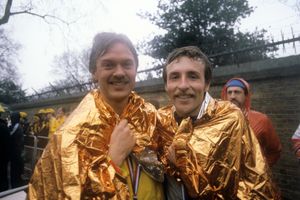
British runner Joyce Smith was the first woman to cross the finishing line, in two hours, 29 minutes and 57 seconds. She would go on to triumph again in 1982 as Hugh Jones became the first male British winner.
About seven hours after the start Marie Dominque de Groot, 30, from Paris and David Gaiman, 47, from East Grinstead ran past the finish line holding hands as the final contestants across the line.
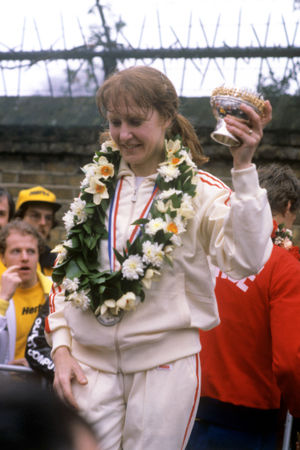
Among those who took part in the first marathon was Don Bratt, who hailed from Great Bridge and went on to complete several ultra-distance runs in aid of charities.
A horrific car accident in 1979 left him with a fractured and displaced hip, broken ribs, damaged ankle and a leg fractured in three places and he was told he would only walk again with the aid of sticks.
But when a business colleague bet him £50 he could not be able to run that inaugural London Marathon in 1981, he accepted the wager.
Following surgery and a long period of rehabilitation and physiotherapy, the then 50-year-old Don began training on an exercise bike before hitting the streets. He completed the race, his first full marathon, and won the bet.
In the following years he ran more than 100 marathons, including three on consecutive weekends.
Dave Clark, a member of Newbury Athletics Club, also took part in the inaugural event, finishing in two hours, 53 minutes and 55 seconds.
“We got really excited at Newbury Athletics Club when Chris Brasher mooted the idea of a London Marathon. In those days there was nothing near that sort of level of competitors.
“You usually got just two or three hundred competitors, but not going into thousands, so this was really something,” he later told the BBC.
“The race went off fine – it was a superb occasion, with huge crowds and helicopters whirring overhead, it was really exciting. I did a fairly good time which I was very pleased with.
“I didn’t realise at the time what an impact that first race was going to have on the rest of my life. Because from then on the London Marathon was the thing I was aiming for,” he added.
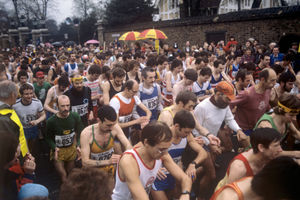
Today, the event remains a popular fixture in the world’s sporting calendar and the 26.2-mile course has remained largely unchanged, encompassing many of the capital’s finest landmarks, old and new.
It has also evolved into a fun day for those taking on the challenge but is also a major charity fundraising event through sponsorship of participants.
Since the first race in 1981, more than a million people have completed the course, in excess of a billion pounds has been raised for charity and there have been countless amazing tales of human achievement.
The London Marathon is organised by London Marathon Events, which gifts its surplus each year to the London Marathon Charitable Trust.
Since 1981, The Trust has awarded grants totalling in excess of £98.3 million to more than 1,500 projects across London and the whole of the UK.
This year’s event will take place on Sunday, April 21.

